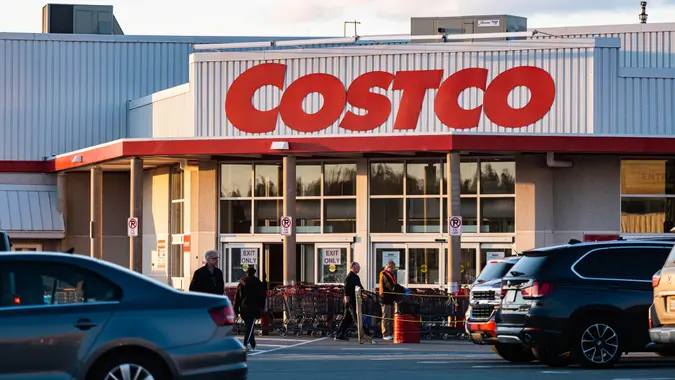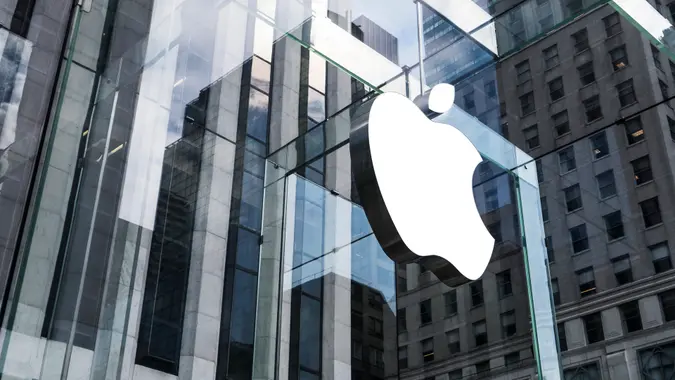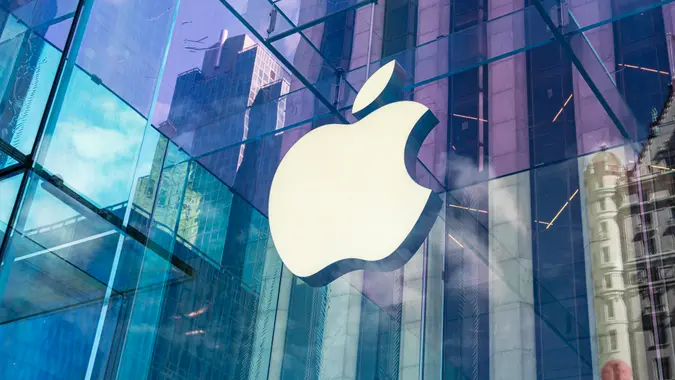Mark Cuban Says Things Could Get ‘Ugly’ for Amazon Amid Tariffs — What Investors Should Know

Commitment to Our Readers
GOBankingRates' editorial team is committed to bringing you unbiased reviews and information. We use data-driven methodologies to evaluate financial products and services - our reviews and ratings are not influenced by advertisers. You can read more about our editorial guidelines and our products and services review methodology.

20 Years
Helping You Live Richer

Reviewed
by Experts

Trusted by
Millions of Readers
President Donald Trump’s plans for worldwide tariffs, particularly on China, have sent the stock and bond markets into a tailspin. With uncertainty in the air, financial markets have endured massive swings both up and down in early April. But if you believe Mark Cuban, the worst may be yet to come for Amazon, the world’s largest online retailer.
According to a post by the famed billionaire on Bluesky, “it’s going to get ugly for Amazon” if the tariffs stick. But that’s certainly a big “if.”
In these current conditions, how should investors view Amazon, and what’s the real downside if the tariffs do remain in place? Here’s what you need to know.
How Ugly Is Ugly?
Generally, if a company’s CEO says that its earnings will be affected, that’s a clear sign that there’s real trouble ahead. Unfortunately for Amazon investors, this is exactly what happened on Apr. 10, 2025.
Andy Jassy, CEO of Amazon, told CNBC on that date that shoppers should expect prices at the company to rise, especially for those who purchase from third-party sellers. As Jassy put it: “Depending what country you’re in, you don’t have 50% extra margin that you can play with.”
As a result, he believes third-party sellers will “try and pass the cost on.”
It wasn’t all doom and gloom, however. Jassy said that the company has been proactive in the light of the rumored tariffs, and it already made “strategic forward inventory buys” in an effort to help keep costs lower for longer for consumers. After the increased tariffs on China were announced, the company also cancelled some direct import orders for products coming from China.
Are the Tariffs Really Going To Stick?
Unfortunately, it’s hard to know exactly where the current presidential administration is really headed with the tariff war. Already, the administration has promised that the tariffs will stick for a significant period of time, but it’s already rolled back the most draconian tariffs it had announced just a few days earlier — the exception being its tariffs on China. This “on-again, off-again” policy makes it hard for investors to get a handle on exactly what effects the tariffs are going to have.
It’s also a challenge for consumers. As Jassy noted, “People have not stopped buying and in certain categories, we do see people buying ahead, but it’s hard to know if it’s just an anomaly in the data because it’s just a few days, or how long it’s going to last.”
When a company doesn’t know how tariffs will affect its business directly, or how it will affect the consumers who buy its products, projections can effectively be tossed out the window.
Potential Opportunity
Between February and April 2025, shares of Amazon fell by more than 29%, although they have slightly bounced back off their year-to-date (YTD) low. But the stock is still down by more than 16% in 2025.
For long-term investors who can see through the short-term tariff news, there could be an opportunity. Analysts have an average one-year price target of $257.52, marking a potential gain of nearly 40% from current levels. But if the tariffs do stick, Amazon could get hit on both fronts, facing higher costs from suppliers and lower demand from consumers.
The Bottom Line
Over the long run, the bull scenario for Amazon seems to be intact, according to analysts. But the truth is that in the short-term, with new pronouncements coming out of the White House seemingly every day, it can be hard to get a handle on exactly where Amazon is headed.
In these types of scenarios, most advisors would recommend a cautious approach, avoiding taking an outsized stake in the company. But if you’re a long-term believer, starting to nibble at these levels, with the stock down double-digits already in 2025, could eventually pay off.
Editor’s note on election coverage: GOBankingRates is nonpartisan and strives to cover all aspects of the economy objectively and present balanced reports on politically focused finance stories. You can find more coverage of this topic on GOBankingRates.com.
 Written by
Written by  Edited by
Edited by 

























